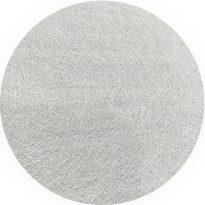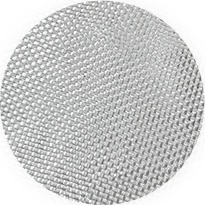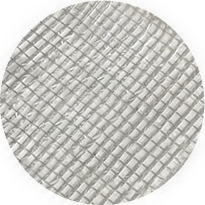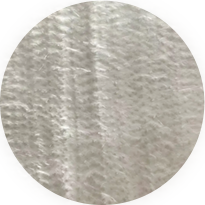Dry Laid Felt / Fiberglass Thick Felt Suppliers
The process of dry production of chopped strand mat is to first cut the raw materials into short fibers through high-speed rotating blades, and then push these short fibers onto the mesh belt to form a layer. Next, by applying pressure and heat, the fibers are fused together to form a felt.
-
 300g Glass Fiber Stitching Felt Knitted Felt
View More
300g Glass Fiber Stitching Felt Knitted Felt
View More
-
 450g Glass Fiber Stitching Edge Felt Knitted Felt
View More
450g Glass Fiber Stitching Edge Felt Knitted Felt
View More
-
 Glass Fiber 150g-500g Custom Insulation Felt
View More
Glass Fiber 150g-500g Custom Insulation Felt
View More
-
 1200g Finely Knitted Composite Felt/Multi-Axial Cloth ±45°0°90° For Wind Energy
View More
1200g Finely Knitted Composite Felt/Multi-Axial Cloth ±45°0°90° For Wind Energy
View More
-
 900g Fine Knitted Composite Felt Multi-Axial Cloth For Wind Turbines
View More
900g Fine Knitted Composite Felt Multi-Axial Cloth For Wind Turbines
View More
-
 450g Unidirectional Fine Knitted Composite Felt For Wind Power Pultrusion
View More
450g Unidirectional Fine Knitted Composite Felt For Wind Power Pultrusion
View More
-
 1050g Fine Woven Chevron Fabric Composite Felt
View More
1050g Fine Woven Chevron Fabric Composite Felt
View More
-
 860g PP Sandwich Felt 380+180+300 Special For High Speed Railway
View More
860g PP Sandwich Felt 380+180+300 Special For High Speed Railway
View More
-
 900g Fine Knitting Composite Felt Multi-Axial ±45° Cloth Wind Power Special Purpose
View More
900g Fine Knitting Composite Felt Multi-Axial ±45° Cloth Wind Power Special Purpose
View More
-
 900g Fine Knitting Composite Felt Multi-Axial Cloth 0°90° Wind Power Special Purpose
View More
900g Fine Knitting Composite Felt Multi-Axial Cloth 0°90° Wind Power Special Purpose
View More
-
How Glass Fiber Mats Are Manufactured: Processes, Materials, and Standards?
As a core reinforcement material in the composite materials industry, the glass fiber mat plays a crucial role in automotive components, bui...
READ MORE -
How Can One Maximize the Performance Benefits of Unidirectional Glass Fiber Cloth in Composite Structures?
The strategic incorporation of specialized reinforcement materials is paramount in the realm of advanced composites manufacturing. Among the...
READ MORE -
What Makes Glass Fiber Mat the Essential Layer for Long-Term Pipeline Integrity?
Understanding the Fundamental Role of Glass Fiber Matting The operational lifespan and efficiency of modern pipeline infrastructure, particu...
READ MORE -
What Makes 300g Pultruded Carbon Fiber Felt a Superior Conductive Composite Material?
Understanding Pultruded Carbon Fiber Composite Felt Pultruded carbon fiber composite felt represents a significant advancement in specialize...
READ MORE -
Why Should Industries Consider Grey 20g Abrasion-Resistant Carbon Fiber Surface Felt?
Unique Composition and Lightweight Properties Grey 20g abrasion-resistant carbon fiber surface felt is engineered with meticulous precision ...
READ MORE
What are the common techniques and processes utilized in production Dry Laid Felt?
When manufacturing Dry Laid Felt, common techniques and procedures include:
1. **Dry Laid Process**: The production procedure of Dry Laid Felt particularly uses dry forming generation. In this approach, fibers are spread onto a surface by using air go with the flow or mechanical pressure, then compacted and heated to form a uniform, felt-like shape.
2. **Fiber Mixing and Pretreatment**: Before manufacturing Dry Laid Felt, the fibers usually want to be blended and pretreated to ensure their proper dispersion and orientation. This can also contain establishing, cleansing, blending, strengthening or different processing steps of the fiber to attain the favored fiber homes and characteristics.
3. **Web Layering**: Fibers are typically arranged in a layered manner to form the initial structure of Dry Laid Felt. This may be finished by way of spreading the fibers continuously or intermittently throughout a aircraft by machinery or airflow, and then stacking the layers.
4. **Compaction and Heating**: Once the fibers are organized on the desired structure, they're normally compacted and heated. This facilitates bind the fibers collectively, increasing the power and stability of the felt. Compaction is normally accomplished with the aid of pressure rollers or embossing machines, whilst heating can be done through hot air or hot urgent.
5. **Post-processing and processing**: After manufacturing Dry Laid Felt, put up-processing and processing steps can be required to attain unique product requirements. This might also include slicing, coating, warmth urgent, embossing, perforating, dyeing or other custom remedies.
What are the key parameters in the product layout and production technique for Fiberglass Thick Felt?
Here are some key parameters throughout the product design and manufacturing procedure of Fiberglass Thick Felt:
1. **Fiber Type and Length**: Selecting the best type and period of fiberglass is essential to the overall performance of the final product. Long fibers provide better energy and durability, at the same time as extraordinary fiber types can have an effect on the softness, density, and chemical resistance of the felt.
2. **Fiber Density**: The density of fibers determines the thickness and quality of the felt. Adjusting the density of the fibers can have an effect on the softness, hardness, thermal insulation performance and acoustic homes of the felt.
3. **Resin Content and Type**: Resin is used to treatment the fiberglass and offer structural support and reinforcement. The quantity and sort of resin impacts the strength, warmth resistance, corrosion resistance and softness of the felt.
4. **Compaction and Heating Conditions**: During the manufacturing method, compaction and heating conditions are important to forming a uniform and strong felt shape. Proper stress, temperature and time make sure the pleasant and overall performance of the felt.
5. **Post-processing process**: Post-processing approaches which include slicing, coating, warm pressing, embossing, and so on. Are also critical to the overall performance and look of custom designed products.
6. **Size and Shape**: Determining the size and form of Fiberglass Thick Felt is an essential design consideration based totally at the give up utility needs. This involves changes in thickness, width, length, and so on.
7. **Environmental friendliness**: Considering the trend of environmental protection and sustainable development, elements consisting of chemical substance selection, power consumption, and waste disposal for the duration of the producing process are also vital parameters.

 English
English 中文简体
中文简体 русский
русский Español
Español










